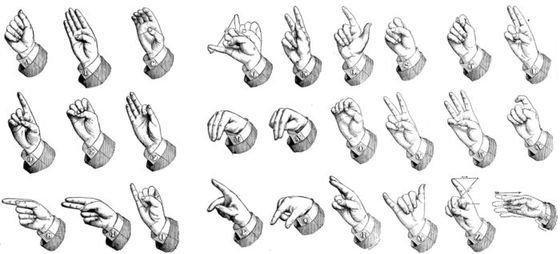Finger Spelling
About Finger Spelling

Finger spelling, also known as dactylology is manual representation of written letters according to manual alphabets which in turn are based on the standard alphabets. Representation of the letters with hand movements is a part of sign language of the deaf communities worldwide. British Sign Language (BSL) uses the so-called two-handed alphabet which like its name suggests, involves the use of both hands to represent letters and numbers. Some sign languages such as American Sign Language (ASL), however, use one-handed alphabet.
When Finger Spelling is Used
Finger spelling is most often used to spell names of people, places, books, film titles, products and other words for which no sign exists. But it can also be used for spelling out words for which the person does not know the sign. Spelling words with hand movements can also be used to emphasise or clarify a particular sign or word which is a common practice in education of sign language. Lastly, finger spelling can be a part of the sign language as such. For example, some signs start by finger spelling of the first letter which is followed moving hands or making other gesture.
Why Finger Spelling is Not the Main Method of Communication of the Deaf
To be able to finger spell words, you need to remember only 26 signs as opposed to hundreds of signs that often do not evoke an association with a spoken equivalent. Theoretically, it would therefore be easier to use finger spelling to communicate, especially for the hearing people. The use of hand movements to spell out words indeed serves as a bridge between the spoken language and the language of the deaf. But finger spelling cannot be used as a substitute for sign language. It can be used to spell out words the way they are written in the spoken language only in the above mentioned situations.
Finger spelling cannot be used as the main method of communication of the deaf for two reasons. Firstly, it is not practical for communication because it would simply take too much time to finger spell a few sentences. Finger spelling is an important part of sign language of the deaf worldwide but the use of hand movements to communicate signs rather than letters is by far more effective. And secondly, using finger spelling alone would also increase the risk of misunderstanding because by the time you would complete a sentence, letter by letter, the other person may forget or misinterpret particular words and misinterpret the communicated information.